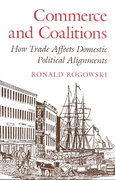Question
PPA 500- to 1,000-word report on the ethical implications of trade restrictions (quotas, tariffs, etc.). The following bullets include some words that are in blue
PPA
500- to 1,000-word report on the ethical implications of trade restrictions (quotas, tariffs, etc.). The following bullets include some words that are in blue -- use these words as first-level headings with appropriate capitalization. Your report should:
- Include a brief introduction and a conclusion.
- Demonstrate your understanding of the law (theory) of comparative advantage and specialization with definitions and real-world examples.
- Discuss the consequences of trade restrictions on consumers.
- Consequences of trade restrictions on firms and workers. Discuss the consequences of trade restrictions on firms that produce products/services that are protected by trade restrictions. Also discuss the consequences of trade restrictions on workers who are employed by firms whose products/services are protected by trade restrictions.
- Lastly, discuss whether trade restrictions are ethical. Include this evaluation in your conclusion.
PART B
For example, you coulddiscuss how the course conceptscan be applied tospecificreal-world situations you encounter at home, at work, or in other real-world situations. Lastly,you are welcome to add any other comments you might have on the Unit 7 topics.
|
Our Unit 7 Learning Outcomesare to:
- Analyze production possibilities frontiers and the implications of specialization and trade.
- Identify market conditions where government intervention may be needed to achieve an optimal outcome in the context of public and private goods.
- Relate supply and demand analysis to government intervention in the context of international trade restrictions.
PART C
1.a) Define the term production possibilities frontier. b) Discuss how the production possibilities frontier is related to education. What consumer goods have you given up to pursue your education? .
PART D
2.a) Who are the top three trading partners of the U.S.?
b) When the government imposes trade restrictions, who wins? When the government imposes trade restrictions, who loses?
Hint:See Chapter 19 of the course textbook.
PART E
3.a) What is the difference between a quota and a tariff?
Hint:See Chapter 19 of Mateer & Coppock.
b) President Trump imposed large tariffs on U.S. imports from China, especially consumer goods. In response, China cut their imports of U.S. soybeans and lobsters. What parties were harmed by the trade war with China? What parties, if any, benefited from the trade war with China?
PART F
| To earn full credit on this assignment, you must:
For example, you coulddiscuss how the course conceptscan be applied tospecificreal-world situations you encounter at home, at work, or in other real-world situations. Lastly,you are welcome to add any other comments you might have on the Unit 8 ttop |
Our Unit 8 Learning Outcomesare to:
- Analyze production possibilities frontiers and the implications of specialization and trade.
- Identify market conditions where government intervention may be needed to achieve an optimal outcome.
- Relate supply and demand analysis to government intervention (trade restrictions).
Step by Step Solution
There are 3 Steps involved in it
Step: 1

Get Instant Access to Expert-Tailored Solutions
See step-by-step solutions with expert insights and AI powered tools for academic success
Step: 2

Step: 3

Ace Your Homework with AI
Get the answers you need in no time with our AI-driven, step-by-step assistance
Get Started


